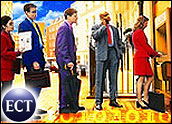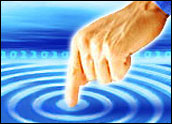
Personal banking is called retail banking in the biz because traditionally consumer banking occurred in a building on Main Street, Anytown, U.S.A. The bank sat among department and hardware stores, coffee and flower shops. In the eyes of consumers, it was another downtown retailer.
But in the mid-1990s, banks began pushing customers out of the bank, cutting the hours of branches and all but forcing consumers to serve themselves. Call centers, ATMs and online banking replaced physical branches with electronic points of distribution.
This effort didn’t turn out well as consumers sought human comfort behind deposit, loan application and investment planning activity. In recent years bank branches have reappeared in droves. Banks recognize that some transactions are too precious to trust to automation and self-service, that consumers want a place to visit and that comfort makes for better relationships.
“New branches are a big part of banks’ marketing budgets,” says Mike Capizzi, an independent sales and marketing consultant in Greendale, Ind. “Banks can see now that there’s a hell of a lot of value to accounts because the product-siloed data now is all synched up. Now all of the sudden banks want to have relationships again, and they need physical presence. It doesn’t have to be big and downtown. It could be anything — as long as it invites relationships with customers.”
Counter Bean-Counter Culture
One bank never went the way of the pack. Umpqua Bank in Portland, Ore., had five branch locations in 1994, when Ray Davis became its CEO. He looked at them with an eye to creating greater relevance and used the hospitality industry as a model.
A year later, one branch became a computer cafe/banking “store.” Gone were desks in favor of cozy chairs, an Umpqua-branded coffee blend and 3-D displays that teased impulse buys.
“The environment was different in feeling. It allowed people to spend time there,” says Lani Hayward, executive vice president, creative strategies for Umpqua. “Most people think about banking as an errand — get in, get out. That’s not very good for cross sell.” The result of the pilot store and 94 more since is trumped profit goals, stronger word-of-mouth marketing and increased cross sell.
In 2003, the 1995 store concept was tweaked by science. Umpqua planned sounds and even smells of its branch banks. Branches began holding yoga classes, hosting movie nights, burning free customized CDs of local music and embracing other community events unrelated to finance. And the bank is reinventing its stores yet again.
“In the last couple of years, banks have built more branches than ever before. But people are doing more remote banking. That’s not going to change,” Hayward admits. However, remote banking cheats cross-sell opportunities and does little to build relationships.
Umpqua’s response: neighborhood stores in metropolitan enclaves with a lot of foot traffic — no drive-up windows, no parking lots. Each of these smaller branches will feature a concierge to the neighborhood who knows as much about local home sales as local merchants’ sales, more computer areas and a video Discover Wall embedded with RFID readers that launch sales pitches and product information as objects in front of the wall are picked up. A paint can might trigger messages about Umpqua’s home equity lines of credit, and the display is expected to attract passersby who see it through the storefront windows. Umpqua is working with Microsoft on notebooks that would take applications right at the wall as “a fun and different way of getting to bank products,” Hayward says.
The Bend, Ore., pilot neighborhood store registered “off-the-charts deposits,” she says.
Can Bank Operations Work With a Retail Approach?
Umpqua is “feeling around, looking for something that will set them apart,” offers Robert Passikoff, president of BrandKeys Inc., a brand engagement consultancy based in New York. However, “if you dress it differently and make it far more experiential, are you going to bond people? No. Will it differentiate you from [a bank that] has lines at the tellers and an inability to get you to an ATM? It goes to the heart of how people plan,” Passikoff says.
For those banks that ask consumers if they’d like comfy chairs, a cup of coffee, kiosks where they can check their e-mail and current interest rates on credit cards, they’ll receive answers in the affirmative. “But there is nothing in the drivers of retail banking relationships that exceeds the expectations of customers in a down home, hunky-dory place,” he says. “Finance is finance. Most people are looking for a wide range of financial products with decent prices, convenience, customer service, a sense of privacy and intelligence when it comes to their money.”
He says Washington Mutual recognized this and reverted to promotions and other common competitive tactics after years of investment in its Occasio retail concept, itself complete with khaki-clad concierges, tellers that stand elbow to elbow with customers to view account activity and kids’ play areas with books and video games. However, the Seattle-based bank contends that recent freebies haven’t replaced Occasio as a strategy. Two-thirds of its 2,140 branches retain the retail feel introduced in 2000 and patented four years later.
“The stores complement our customer base — the middle-market consumer. The strategy has done very well,” says Mary Kelley, vice president, consumer group public relations. WaMu retail banking grew 23 percent between between year end 2004 and year end 2005, reflecting an increase in the number of households served and product cross sales. At the end of 2004, the average WaMu customer household had 5.85 bank products. A year later, that was up to 6.31.
Retail Banking Ripe for Change
Umpqua’s success, too, is hard to ignore. Some branches have exceeded annual deposit expectations for Year One in just two months, and the neighborhood store in Bend has generated $72 million in deposits in just 18 months. In the 1995 trial, Umpqua was third in market share in the area of the test store. Within two years, it was ahead of both its competitors.
“We need to be competitive,” and the strategy gap is shrinking, Hayward says. “Bank products and services are a commodity essentially, so if you want to differentiate yourself, you have to find a different way to do it. On the non-financial side, there’s more interest in things that make a difference in people’s lives.”
By opening in heavy-traffic neighborhoods, banks also can generate additional revenue by selling alternative, non-banking products and services, Capizzi agrees. “It’s convenient for customers, and it drives people inside,” he says. “They might ask about additional bank products; they might interact.”
“We have to look for ways to expand, evolve, revolutionize, change entirely,” Hayward concludes.





















































